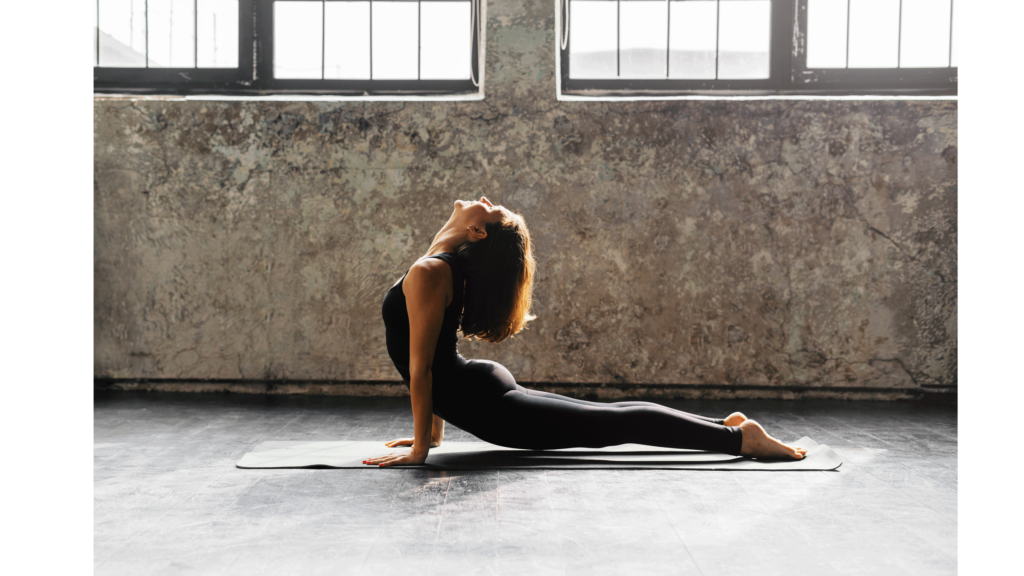
“], “filter”: { “nextExceptions”: “img, blockquote, div”, “nextContainsExceptions”: “img, blockquote, a.btn, a.o-button”} }”>
Heading out the door? Read this article on the new Outside+ app available now on iOS devices for members!
>”,”name”:”in-content-cta”,”type”:”link”}}”>Download the app.
As a certified personal trainer, yoga teacher, and running coach, I often see students stretching and practicing yoga in ways that make me cringe. My concern has everything to do with the way some students feel the need to strain, contort, and otherwise unsafely maneuver their back muscles as they come into a pose.
Ironically, study after study indicate that yoga can help reduce the discomfort of back pain and strengthen the muscles of the back. But that doesn’t happen if you’re subjecting your spine and back muscles to unsafe movement patterns. In these instances, yoga can actually be the cause of back injuries, either by increasing the likelihood of lumbar muscle strains or aggravating preexisting conditions like bulging discs or osteoarthritis.
I think we’ve all seen people force themselves into an extreme backbend rather than ease into it. But there are other bad habits that I commonly see in yoga class. Whether you practice yoga on a mat or in a chair, avoiding these mistakes can help you practice yoga without inadvertently injuring yourself.
6 Bad Yoga Habits for Your Back
If you’re new to yoga or feel unfamiliar with some of the basics, sign up for beginner yoga classes or work one-on-one with a certified yoga teacher a few times before taking classes that are designed to include more challenging poses and sequences.
If you experience any back pain or have a pre-existing back condition, consult with a physician prior to practicing yoga.
1. Not Warming Up
It’s just as important to take your time coming into your yoga practice as it is to warm up before your cardio workouts or strength training. Warming up increases circulation to your muscles and engages the neuromuscular system, which in turn helps you properly activate the right muscles and joints for each yoga pose. When this doesn’t happen, strains and sprains are more likely.
Any in-person or online yoga class you take already includes a warm-up. When you’re practicing by yourself, though, take a few minutes to do some simple warm-up poses such as Cat–Cow and Child’s Pose. You could also do a little cardio before your yoga poses.
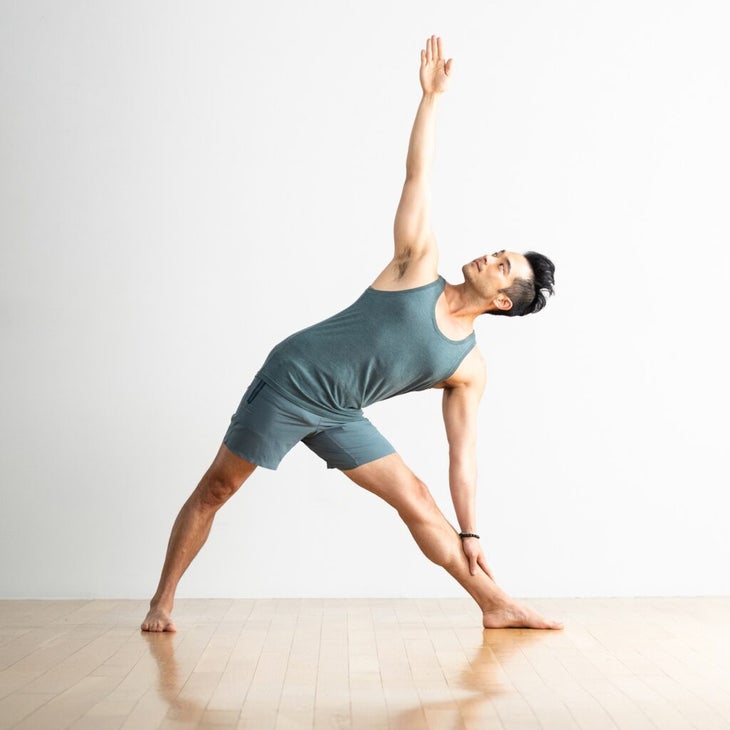
2. Moving Too Fast
Transitioning from one pose to another too quickly or rushing into an extreme version of a pose can increase your risk of back strains because the smaller ligaments and muscles of the back cannot always withstand high-velocity movements.
Don’t race through your transitions and try to ease into each pose by gradually finding alignment that works for your body. I tell students to “grow into the pose,“ which means that as you move your body into position, you can continually adjust where in your body you need to contract and release your muscles.
For example, with Extended Triangle Pose, don’t immediately reach down and try to place your hand all the way on the floor while also twisting your torso and reaching your other arm toward the ceiling. First, slowly lengthen through your side body before you reach your hand toward your ankle. Then slowly twist to reach upward. Allow your muscles to settle into position. Breathe, adjust, and breathe some more. You can always rest your hand on a block or your shin.
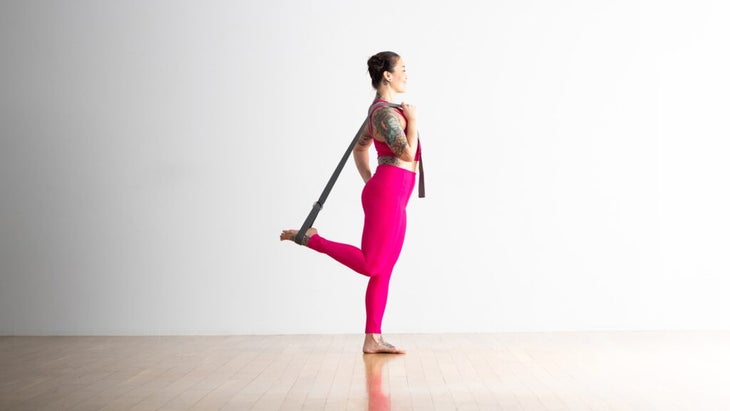
3. Using Force to Get Into a Pose
In order to experience the strengthening benefits of yoga, you need to engage your muscles. Relying on momentum or gravity to lift your body or hold it in position during a pose decreases the workload required by your muscles. That means you’re not fully benefiting from the pose and potentially increasing the risk of hurting your back.
For example, if you’re coming into an intense backbend, such as Dancer Pose, be careful to find the shape by using the quad and glute muscles to lift your leg rather than pulling on the foot or trying to slingshot yourself into the pose. Continue to engage your quads and glutes as you keep your leg in place against gravity. Otherwise, you risk overtaxing the small muscles of your upper back. (If you already experience lower back strain or pain, I recommend avoiding intense back-bending yoga poses.)
You can also use a yoga strap around your foot in Dancer to reduce the tension on the back muscles, but be careful not to use the strap as a way to pull your body too far into the pose. The strap is a tool to help you create the basic shape of the pose, not to intensify the pose.
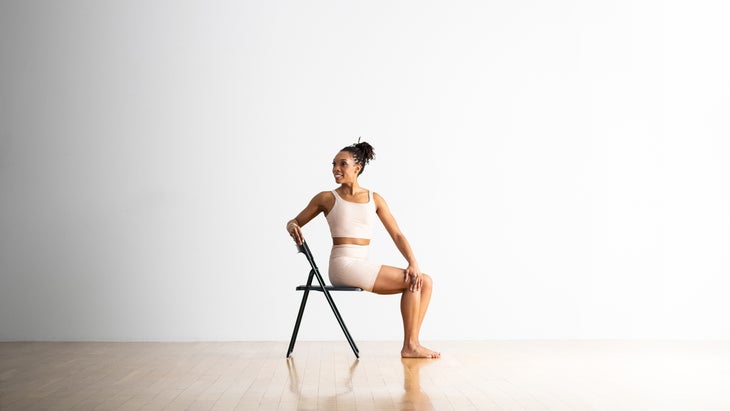
4. Twisting Too Soon and Too Far
With spinal twists, the tendency among students is to twist the spine too fast and too far, as if the goal is to rotate as much as possible in a race against self and others. Twisting beyond the limitations of your spine can overstretch the small ligaments that connect your vertebrae.
Before coming into a seated spinal twist, make sure you first feel stable in your sit bones. You want a firm foundation before you engage your core muscles. Then you can rotate slowly from your core until you feel some resistance. Stay here and breathe into the pose, remembering to keep your sit bones stable on the mat.
In any seated or standing twist pose, rotate your body only to the point when you feel a slight resistance in your back. As you inhale, sit a little taller. If you feel as though you can comfortably settle into a more intense twist, exhale as you slowly attempt to twist more. Listen to your body.
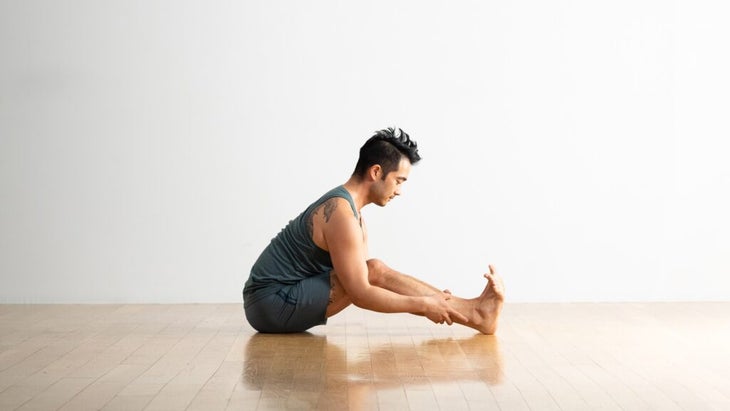
5. Rounding Rather than Bending
When you bend forward, whether you’re standing or sitting, you want the movement to initiate from the forward tilt of the pelvis rather than the rounding of your lumbar spine. When you push yourself to bend forward and cause your lower back to round like the letter C, you can compress your vertebra to an extreme degree.
The primary objective of any forward bend is to create that hinging movement in your pelvis. You want to focus on lengthening your spine, not forcing your chest close to your thighs. Engaging your abdominal muscles and pulling your shoulder blades toward one another and away from your ears can help with this.
For example, when you come into a Seated Forward Fold, hinge from your hips to bring your upper body toward your lower body like the straight arm of a lever. Sitting on the edge of a folded blanket can help tilt the pelvis.
Similarly, with Boat Pose, it is critical to keep your back straight as you tilt your entire upper body backward rather than allow your low back to collapse and round. Lift your chest toward the ceiling to maintain a straight back. If you feel your lower back rounding, bend your knees and lightly rest your heels on the mat.
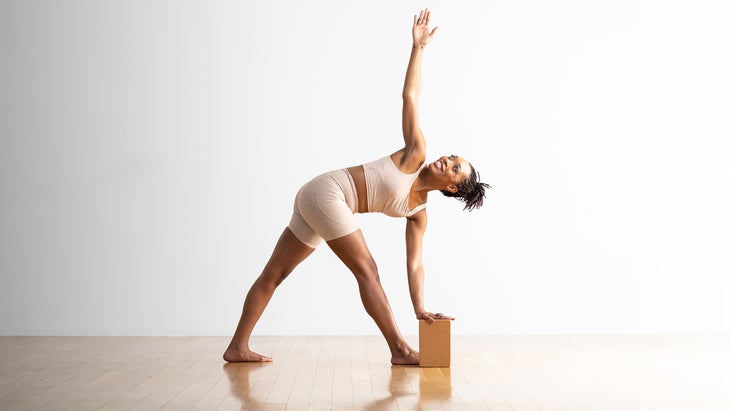
6. Doing Poses You Aren’t Ready For
Pushing yourself into yoga poses you may not be ready for—especially intense back bends—can wreak havoc with your back.
I commonly see students in Standing Forward Bend trying to reach the floor with their fingers. But when you force the stretch due to insufficient hamstring flexibility, you increase the strain on your back. Instead, place yoga blocks in front of your feet and press your fingers into them. That helps your body not only find the intended shape but also the intended engagement. The same applies to intense twists such as Revolved Triangle Pose.
This advice is also relevant to more intense forward bends, such as Plow Pose. You can find a similar stretch muscles with a much gentler Wind-Relieving Pose or Child’s Pose. Similarly, take your time with extreme backbends such as Dancer, Camel, Bow, and Wheel.
Your back will become stronger and more flexible over time with regular and moderate practice. Yoga is not a race. There is no finish line.






